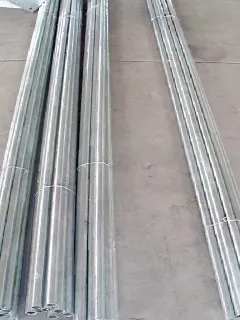loading...
- No. 9, Xingyuan South Street, Dongwaihuan Road, Zaoqiang County, Hengshui, Hebei, China
- admin@zjcomposites.com
- +86 15097380338
- Welcome to visit our website!
sand filter frp
Understanding Sand Filters and FRP A Comprehensive Overview
Sand filtration is a widely employed method in water and wastewater treatment, recognized for its efficiency and simplicity. At the heart of many modern filtration systems is the use of Fiber Reinforced Plastic (FRP) materials, which have revolutionized the construction and durability of sand filters. This article delves into the design, benefits, and applications of sand filters made from FRP.
What is a Sand Filter?
A sand filter is a type of water filter that utilizes layers of sand to remove impurities and contaminants from water. The process involves passing water through a bed of sand that traps particles, including sediments, bacteria, and other particulates. The effectiveness of sand filters rests on the size and arrangement of the sand grains, which facilitate the physical and biological processes necessary for filtration.
Sand filters can be used for various purposes, including potable water treatment, wastewater treatment, and swimming pool filtration. They are favored for their low operational costs, minimal chemical usage, and ability to reduce the load on subsequent treatment processes.
The Role of FRP in Sand Filters
FRP, or Fiber Reinforced Plastic, is a composite material made from a polymer matrix reinforced with fibers, typically glass or carbon. This material is prized for its high strength-to-weight ratio, resistance to corrosion, and durability under various environmental conditions. When applied to sand filters, FRP offers several key advantages
1. Corrosion Resistance Traditional sand filters are often made from metal or concrete, which can corrode or degrade over time, especially in harsh environments. FRP, however, is inherently resistant to rust and chemical damage, extending the lifespan of the filter significantly.
2. Lightweight Construction The lightweight nature of FRP simplifies transport and installation. This aspect is particularly beneficial for large-scale operations where heavy materials might incur high transportation costs.
sand filter frp

3. Customizability FRP can be molded into complex shapes, allowing for innovative designs that optimize the filtration process. This flexibility means that manufacturers can tailor filters to meet specific applications, enhancing performance and efficiency.
4. Low Maintenance FRP sand filters typically require less maintenance than their traditional counterparts. Their resistance to chemical and environmental stresses means operators can expect fewer repairs and longer operational periods between service intervals.
Applications of FRP Sand Filters
FRP sand filters are employed across various sectors due to their robustness and adaptability. Here are some notable applications
- Municipal Water Treatment Many cities upgrade their water treatment facilities by incorporating FRP sand filters to improve efficiency and sustainability while minimizing chemical inputs. - Industrial Processes Industries that require high-quality process water, such as pharmaceuticals and food processing, utilize FRP sand filters to remove impurities and ensure compliance with stringent regulatory standards.
- Aquaculture In fish farming, maintaining water quality is crucial. FRP sand filters help in maintaining a clean environment for aquatic life by removing suspended solids from water.
- Swimming Pools The recreational industry benefits from FRP sand filters, ensuring clean and safe water while reducing the need for hazardous chemicals.
Conclusion
In summary, sand filters employing Fiber Reinforced Plastic represent a significant advancement in water filtration technology. The combination of efficient particulate removal, durability, and reduced maintenance requirements makes FRP sand filters an ideal choice for various applications. As the demand for efficient water treatment solutions grows, the role of FRP in enhancing the performance and sustainability of sand filters will undoubtedly become more prominent, leading to cleaner water and healthier ecosystems.
-
The Rise of FRP Profiles: Strong, Lightweight, and Built to LastNewsJul.14,2025
-
SMC Panel Tanks: A Modern Water Storage Solution for All EnvironmentsNewsJul.14,2025
-
GRP Grating: A Modern Solution for Safe and Durable Access SystemsNewsJul.14,2025
-
Galvanized Steel Water Tanks: Durable, Reliable, and Ready for UseNewsJul.14,2025
-
FRP Mini Mesh Grating: The Safer, Smarter Flooring SolutionNewsJul.14,2025
-
Exploring FRP Vessels: Durable Solutions for Modern Fluid HandlingNewsJul.14,2025
-
GRP Structures: The Future of Lightweight, High-Performance EngineeringNewsJun.20,2025
